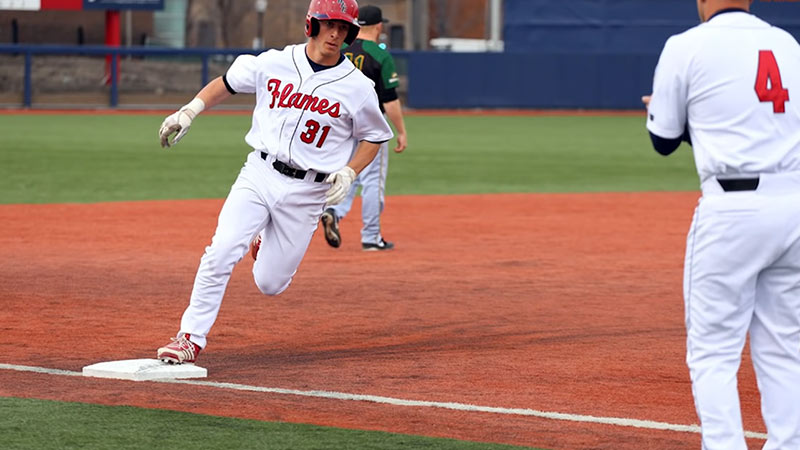In the game of baseball, defensive plays are as crucial as offensive feats. While hits and home run garner much attention, the ability of fielders to make outs is equally significant.
At the heart of defensive success lies the concept of putouts. Putouts represent the moments when defensive players prevent the opposing team from advancing or scoring by recording outs through catches, force plays, or tags.
They are essential statistics used to evaluate fielding prowess and measure defensive performance. This article delves into the world of putouts in baseball, exploring their definition, different types, and their significance in tracking and evaluating defensive abilities.
We will delve into groundouts, flyouts, strikeouts, tag outs, and force outs, understanding how each contributes to the game and the statistics that reflect them.
Additionally, we will examine how putouts are tracked and used to evaluate players and teams, providing valuable insights into their defensive contributions. So, join us on this journey to uncover the importance and impact of putouts in the game of baseball.
What Is Putout in Baseball?
In baseball, a putout refers to a defensive play made by a fielder that results in the batter or baserunner being declared out. It is an essential statistic used to track defensive performance and evaluate fielders’ abilities.
Putouts are recorded when a fielder successfully retires an offensive player, preventing them from reaching a base or scoring a run.
Putouts can occur in various ways, depending on the type of play involved. The most common types of putouts include groundouts, flyouts, strikeouts, tag outs, and force outs. Each of these plays involves specific actions and fielding techniques.
Different Types of Putouts
There are initially 5 different types of putouts showcasing the diverse defensive skills required in baseball. They are discussed below.
Groundout Putouts
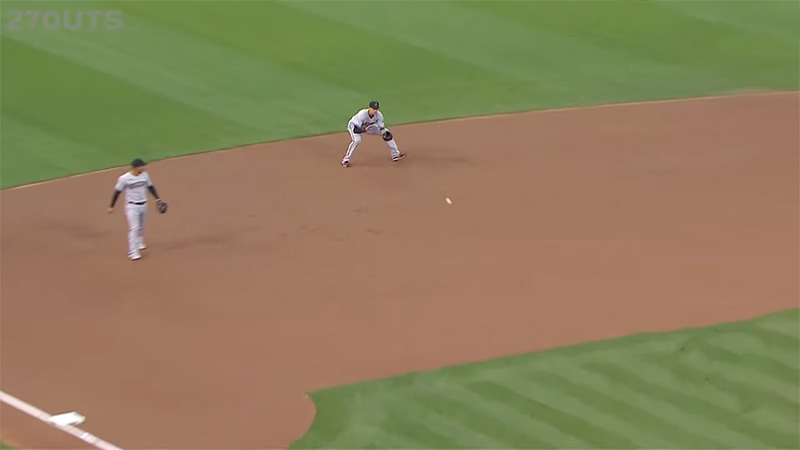
Groundout putouts are common defensive plays in baseball that occur when a batter hits the ball along the ground, resulting in a fielder cleanly fielding the ball and throwing it to first base before the batter reaches safely. These plays involve a combination of infielders and sometimes the pitcher.
When a ground ball is hit, the fielders must react quickly to position themselves correctly and field the ball cleanly. Infielders such as the shortstop, third baseman, and second baseman are typically responsible for making these plays.
They need to demonstrate excellent footwork, quick reflexes, and solid glove work to field the ball cleanly and make an accurate throw to first base.
The pitcher also plays a crucial role in groundout putouts. If the ball is hit directly back to the pitcher, they must field it cleanly and make a swift and accurate throw to first base. Pitchers need to be athletic and have good fielding skills to handle these plays effectively.
Examples and Scenarios of Groundout Putouts
- Routine Groundout: A routine groundout occurs when a batter hits a ground ball within the reach of an infielder, who fields it cleanly and throws it to first base. For example, a shortstop fielding a routine ground ball hit between third base and shortstop and making a strong throw to first base to retire the batter.
- Double Play Groundout: A double play groundout happens when a batter hits a ground ball that allows the fielding team to turn a double play, retiring two baserunners. This requires quick and precise fielding, along with a strong throw to initiate the double play. For instance, a second baseman fielding a ground ball, stepping on second base to force out the runner, and then throwing to first base to complete the double play.
- Slow Roller Groundout: A slow roller groundout occurs when a batter hits a softly hit ground ball that requires the fielder to charge in quickly, field the ball cleanly, and make a swift throw to first base. This play often tests the fielder’s ability to make a quick decision and execute under pressure.
These examples illustrate the various scenarios in which groundout putouts can occur. Infielders and pitchers must work together seamlessly to execute these plays and record-outs, showcasing the importance of solid defensive fundamentals and teamwork in the game of baseball.
Flyout Putouts
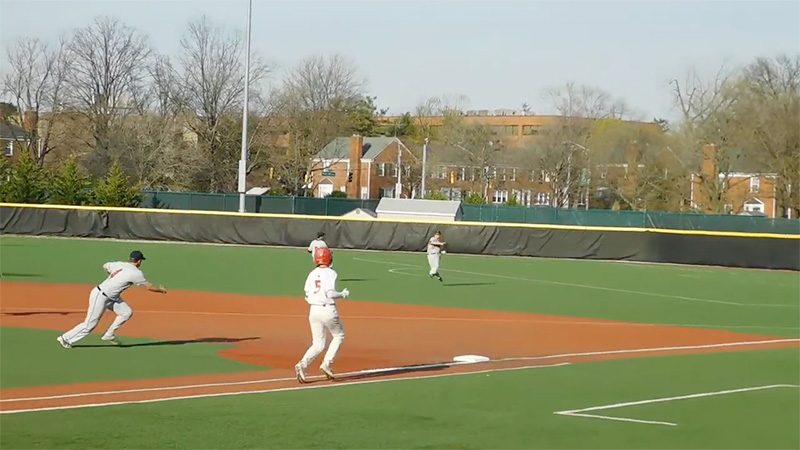
Flyout putouts occur when a batter hits a ball in the air, and a fielder catches it before it touches the ground. These defensive plays involve outfielders and sometimes infielders, depending on the location and trajectory of the fly ball.
Outfielders, typically positioned in the outfield grass, are primarily responsible for making flyout putouts. They need to possess good speed, excellent tracking abilities, and strong throwing arms to cover the large expanse of the outfield and make successful catches.
Outfielders must also communicate effectively with each other to avoid collisions and ensure the proper positioning to make the play.
Infielders, particularly the shortstop, second baseman, and third baseman, may also be involved in flyout putouts. When infield pop-ups occur, infielders have the opportunity to make the catch if the ball remains within the infield area.
In these cases, they must quickly track the ball and position themselves to make the catch, often facing the challenge of dealing with sun glare or strong winds.
Illustration of Different Types of Flyout Putouts
- Outfield Catches: The most common type of flyout putout involves outfielders catching fly balls hit deep into the outfield. This can include high fly balls hit to the outfield gaps or near the outfield fence. Outfielders must judge the trajectory, speed, and distance of the ball to position themselves correctly and make the catch before the ball touches the ground. Examples include a center fielder sprinting and making a leaping catch at the warning track or a left fielder making a running catch on a fly ball hit towards the left-field foul line.
- Infield Pop-ups: Infield pop-ups occur when a batter hits a high fly ball within the infield area. Infielders, particularly the shortstop, second baseman, or third baseman, may be responsible for making the catch. They must communicate with each other to determine who has the best angle and positioning to make the play. Examples include a shortstop backpedaling and making a catch on a pop-up hit behind the pitcher’s mound or a third baseman calling off the catcher to make a catch on a pop-up hit in foul territory.
These examples demonstrate the different types of flyout putouts that can occur during a baseball game. Fielders, whether positioned in the outfield or the infield, need to exhibit excellent judgment, coordination, and athleticism to make these plays and record the outs.
Flyout putouts play a significant role in preventing batters from reaching base and contribute to the defensive success of a team.
Strikeout Putouts
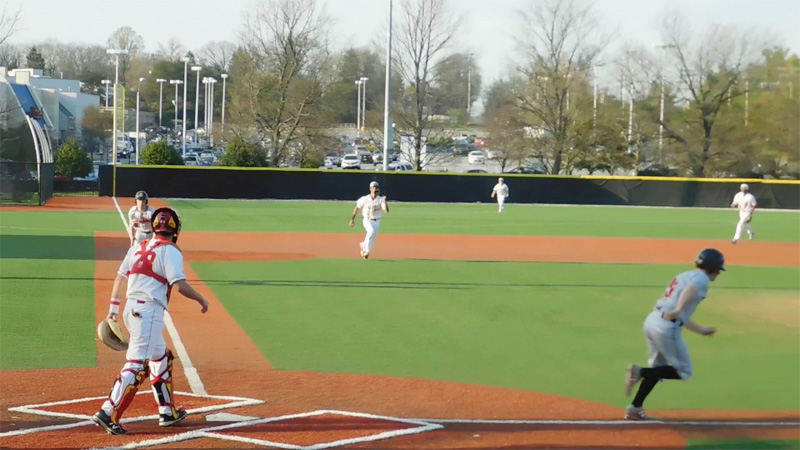
Strikeout putouts occur when a pitcher throws three strikes to a batter, and the batter fails to make contact with the ball. Both the pitcher and catcher play essential roles in recording strikeout putouts.
The pitcher is responsible for delivering pitches with precision, varying speeds, and movement to deceive the batter and induce swings and misses. They strategically aim to locate the ball within the strike zone, while also using breaking balls, change-ups, or fastballs to disrupt the batter’s timing and make it difficult for them to make solid contact.
The pitcher’s ability to execute pitches effectively greatly influences their success in recording strikeouts.
The catcher plays a crucial role in strikeout putouts by setting up the target for the pitcher and effectively receiving and controlling the pitched ball.
They must work in sync with the pitcher, understanding the pitcher’s repertoire and tendencies to call the appropriate pitches and locations. The catcher’s framing skills, ability to block pitches in the dirt, and agility to make quick reactions on foul tips contribute to the overall success of recording strikeouts.
Significance of Strikeouts
Striking out a batter is highly valued in baseball due to its significant impact on defensive performance. Here are some reasons why strikeouts are significant:
- Eliminating the batter: A strikeout eliminates the batter from further offensive opportunities during that particular plate appearance. It prevents the batter from putting the ball in play, thereby reducing the chances of reaching base or driving in runs.
- Limiting baserunners: Since a strikeout does not result in a ball in play, it eliminates the possibility of the batter reaching base safely. This reduces the chances of advancing baserunners or causing potential scoring opportunities for the opposing team.
- Generating momentum: Strikeouts can provide a boost of momentum for the pitching team. It can demoralize the opposing team’s offense while energizing the defense and the pitching staff. A dominant strikeout pitcher can change the course of a game by keeping the opposing team off balance and stifling their offensive production.
- Defensive efficiency: Recording strikeouts contributes to defensive efficiency by minimizing the number of fielders required to make plays. Unlike balls in play, strikeouts do not rely on fielders to execute defensive plays, reducing the possibility of errors or defensive mishaps.
- Pitcher’s effectiveness: Strikeouts often indicate the effectiveness of a pitcher. A high strikeout rate suggests the pitcher has the ability to overpower hitters, generate swings and misses, and control the game. It is a key metric used to evaluate a pitcher’s skill level and dominance.
Strikeouts have a significant impact on defensive performance, providing an advantage to the pitching team by limiting baserunners, generating momentum, and showcasing the pitcher’s effectiveness.
It is a fundamental aspect of the game that showcases the battle between pitcher and batter and can greatly influence the outcome of a baseball contest.
Tag Out Putouts
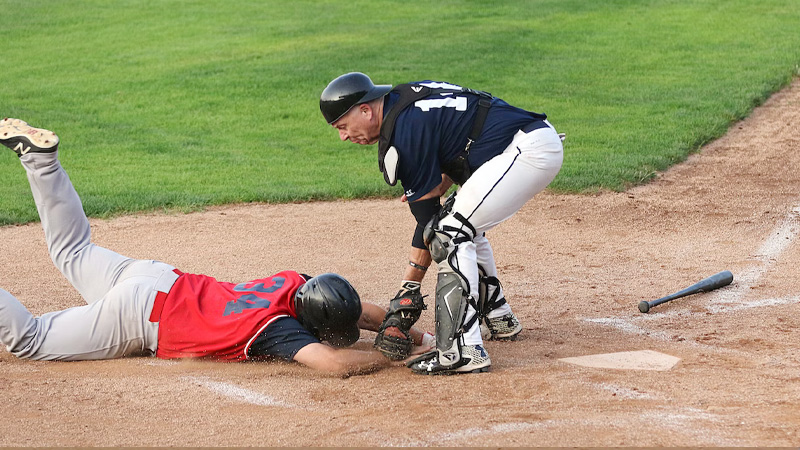
Tag-out putouts occur when a defensive player tags or touches an offensive player with the ball while the offensive player is not on a base. These plays often happen in situations where the offensive player is attempting to advance to another base or is caught in a rundown between bases.
Tag-out putouts typically occur when the defensive player is in possession of the ball and is in proximity to the offensive player. The defensive player must physically touch the offensive player with the ball before the player reaches the base to record the out.
These plays require quick reflexes, agility, and effective positioning by the defensive player to successfully tag the runner.
Examples of Tag Out Putouts
- Stolen Base Attempts: One common example of a tag out putout is when a baserunner attempts to steal a base. The catcher receives the pitch, and if they throw accurately and in time to the base being stolen, the fielder covering that base must catch the ball and apply the tag to the runner before they reach the base. If the tag is applied successfully, the baserunner is called out.
- Rundowns: Another scenario where tag-out putouts occur is during rundowns. A rundown happens when a baserunner is caught between two bases and the defensive team attempts to tag them out by throwing the ball back and forth to different fielders. The defensive players involved in the rundown need to execute precise throws and apply tags swiftly to prevent the runner from returning safely to a base. If the defensive team successfully tags the runner before they reach a base, an out is recorded.
- Pickoff Attempts: Tag-out putouts also occur during pickoff attempts. When a pitcher attempts to pick off a baserunner who is taking a lead, they throw the ball to a fielder covering the base. The fielder must catch the ball and apply the tag to the runner before they can return to the base. If the tag is applied before the runner reaches the base, the runner is called out.
Force Out Putouts
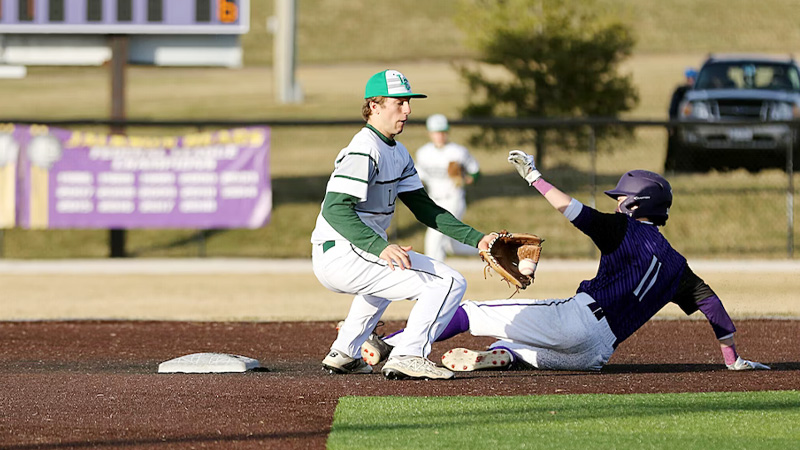
Force-out putouts occur when a defensive player with possession of the ball tags or touches a base before the offensive player reaches that base, eliminating the need to tag the runner.
These plays happen in situations where the runner is forced to advance to the next base due to a batter becoming a runner or when there are already runners on base and a ball is hit in play.
Force-out putouts are commonly seen in the following scenarios:
- Batter Becomes a Runner: When a batter hits a fair ball and becomes a runner, the defensive team can force out the batter at first base if the fielder covering first base receives the ball and touches the base before the batter reaches it. Since the batter must run to first base, the fielder only needs to touch the base to record the out.
- Double Plays: Force-out putouts are crucial in double-play situations. With a runner on first base, if a ground ball is hit to an infielder, they can touch second base to force out the runner coming from first base, and then throw to first base to force out the batter-turned-runner. This sequence results in two force-out putouts and is known as a double play.
- Baserunner Advancement: In situations where there are already runners on base, a ball hit in play can force runners to advance to the next base. For example, if there is a runner on first base and a ground ball is hit, the fielder can touch second base to force out the runner coming from first base and then throw to first base to attempt a double play or to force out the batter-turned-runner.
Importance of Force Out Plays, Particularly at Second Base
Force-out plays, especially at second base, are critical in baseball. Second base is a key position for forcing out putouts due to its strategic importance in controlling the baserunners and turning double plays.
Here’s why force-out plays at second base are significant:. . .
- Controlling the Baserunners: Force outplays at the second base help to control the movement of Baserunners. By forcing out a runner at second base, the defense eliminates the threat of that runner potentially advancing to third base or scoring a run.
- Turning Double Plays: Second base is a pivotal position for turning double plays. By forcing out the runner at second base and making a quick throw to first base, the defense can complete a double play, which can drastically change the momentum of the game and help prevent the offensive team from scoring runs.
- Defensive Strategy: Coaches and managers often employ defensive strategies that involve force-out plays at second base. For example, they may position the middle infielders, such as the shortstop and second baseman, to be ready for ground balls hit in that direction, prioritizing force-out opportunities.
- Time-Saving: Force-out plays at second base can be quicker than other types of putouts, such as tag outs or flyouts. Since the fielder only needs to touch the base to record the out, it saves valuable time and allows the defense to complete plays efficiently.
Force-out plays, especially those at second base, are essential defensive maneuvers that can help control the baserunners, turn double plays, and impact the outcome of the game.
They require precise fielding, quick decision-making, and effective coordination among the defensive players to execute successful force-out putouts.
Tracking and Evaluating Putouts
Putouts are a fundamental statistic used to track defensive plays made by fielders. Putouts are recorded when a defensive player is responsible for getting an offensive player out by making a play on a batted ball or in specific situations where force-out or tag-out putouts occur.
The official scorekeeper is responsible for tracking and recording putouts during the game. The scorekeeper assigns each fielder a position number based on the fielding position they occupy (e.g., 1 for pitcher, 2 for catcher, 3 for first baseman, and so on).
When a fielder makes a play resulting in an out, such as catching a fly ball or making a play on a ground ball, the scorekeeper assigns a putout to the respective fielder based on their position number.
Putouts are an essential component of defensive statistics and are recorded for each individual fielder in a game. They provide a tangible measure of a player’s defensive contributions and can be used to evaluate their fielding abilities.
Use of Putouts to Evaluate Defensive Performance and Fielding Prowess
Putouts play a crucial role in evaluating defensive performance and assessing a player’s fielding prowess. Here are some ways putouts are used in this context:
Total Putouts
The total number of putouts a player accumulates over a season reflects their overall defensive involvement and ability to make outs. It can indicate a player’s fielding range, positioning, and ability to handle different defensive situations.
Position-Specific Comparisons
By comparing the number of putouts recorded by players in the same fielding position, analysts and scouts can evaluate and compare their fielding abilities. For example, comparing the putouts of different center fielders allows for assessments of their range, ability to track fly balls, and defensive impact.
Defensive Metrics
Putouts are incorporated into various defensive metrics and advanced statistics to provide a comprehensive evaluation of a player’s defensive performance.
Metrics like Defensive Runs Saved (DRS) and Ultimate Zone Rating (UZR) take into account the number of putouts made by a player at different positions, along with other factors such as range, arm strength, and positioning, to quantify their overall defensive contributions.
Fielding Percentage
Putouts are also used in calculating fielding percentage, which is a basic measure of a player’s fielding success. The fielding percentage is determined by dividing the total number of successful putouts by the total number of chances (putouts plus errors).
A higher fielding percentage indicates a player’s ability to convert opportunities into outs and suggests a higher level of fielding proficiency.
Putouts serve as a foundation for assessing defensive performance and the fielding prowess of individual players. They provide tangible data points that can be used to compare players, evaluate their contributions, and form the basis for more advanced defensive metrics.
By tracking and analyzing putouts, teams, coaches, scouts, and analysts can gain valuable insights into a player’s defensive abilities and impact on the game.
Putouts by Fielding Position
Fielding Position | Putouts |
Pitcher (1) | 84 |
Catcher (2) | 120 |
First Baseman (3) | 485 |
Second Baseman (4) | 365 |
Third Baseman (5) | 420 |
Shortstop (6) | 410 |
Left Fielder (7) | 305 |
Center Fielder (8) | 390 |
Right Fielder (9) | 325 |
FAQs
Can a pitcher record putouts?
Yes, pitchers can record putouts. They are often involved in fielding ground balls hit back to the mound or covering first base on plays. The pitcher’s fielding position is designated as number 1 in scorekeeping.
Are outfielders involved in recording putouts?
Absolutely. Outfielders, including left fielders, center fielders, and right fielders, can record putouts by catching fly balls hit to the outfield. They play a crucial role in securing outs on balls hit in the air.
How are putouts different from assists?
Putouts and assists are related but distinct defensive statistics. Putouts are recorded when a fielder directly makes the out, while assists are recorded when a fielder contributes to an out by making a throw that leads to the out being made.
Are putouts used to calculate a player’s fielding percentage?
Yes, putouts are one of the components used to calculate a player’s fielding percentage. The fielding percentage is determined by dividing the total number of putouts and assists by the total number of chances (putouts, assists, and errors).
Can a fielder earn multiple putouts on a single play?
Yes, a fielder can earn multiple putouts on a single play. For instance, a fielder could catch a fly ball and then throw to a base to record a force out or tag out, earning two putouts on that play.
Wrapping Up
Putouts play a crucial role in the game of baseball, serving as a measure of defensive success and fielding prowess. They are recorded when fielders make outs through various means such as catching fly balls, fielding grounders, making force outs, or executing tag outs.
Putouts are essential for evaluating individual player performance and team defensive abilities. Tracking putouts allows for comparisons among fielders in different positions, highlighting their range, positioning, and ability to convert opportunities into outs.
Putouts also contribute to advanced defensive metrics and are used in calculating fielding percentage, a basic measure of fielding success.
Overall, putouts provide tangible data points that help assess defensive performance, analyze fielding abilities, and quantify the impact of players on preventing opposing teams from scoring runs.
They are an integral part of the game and a key component in evaluating and appreciating the art of defense in baseball. Thank you.

